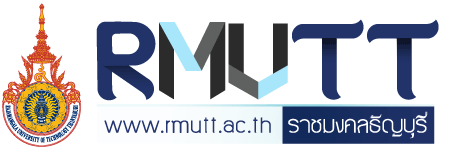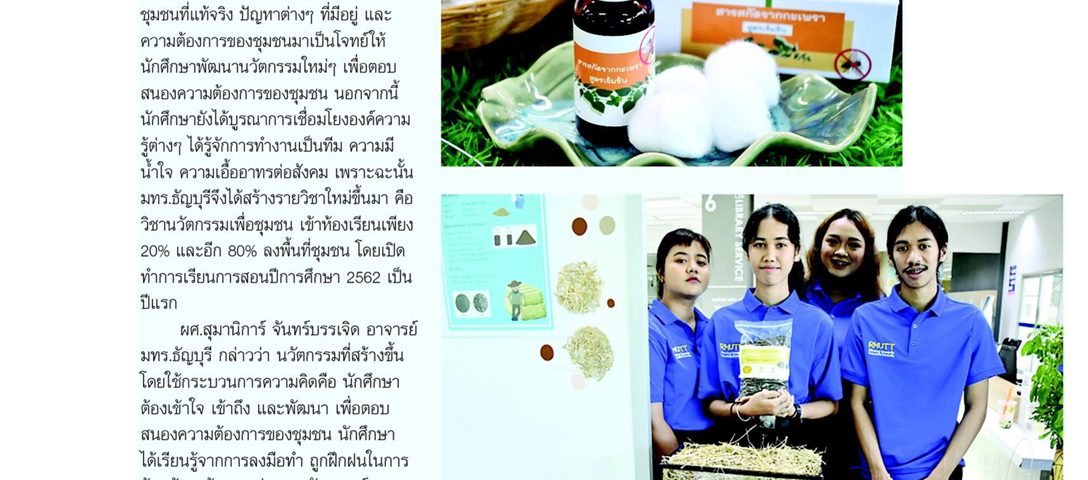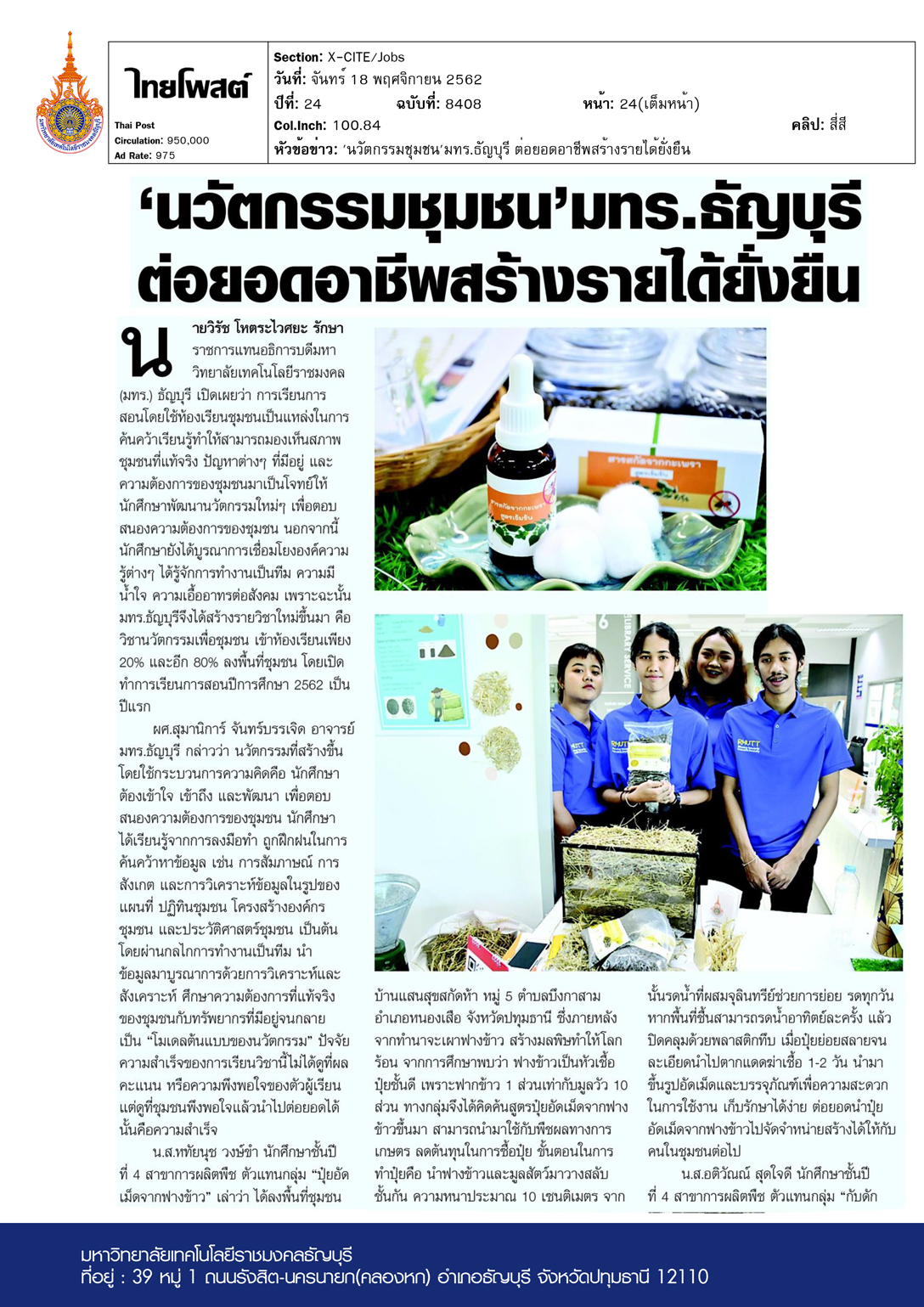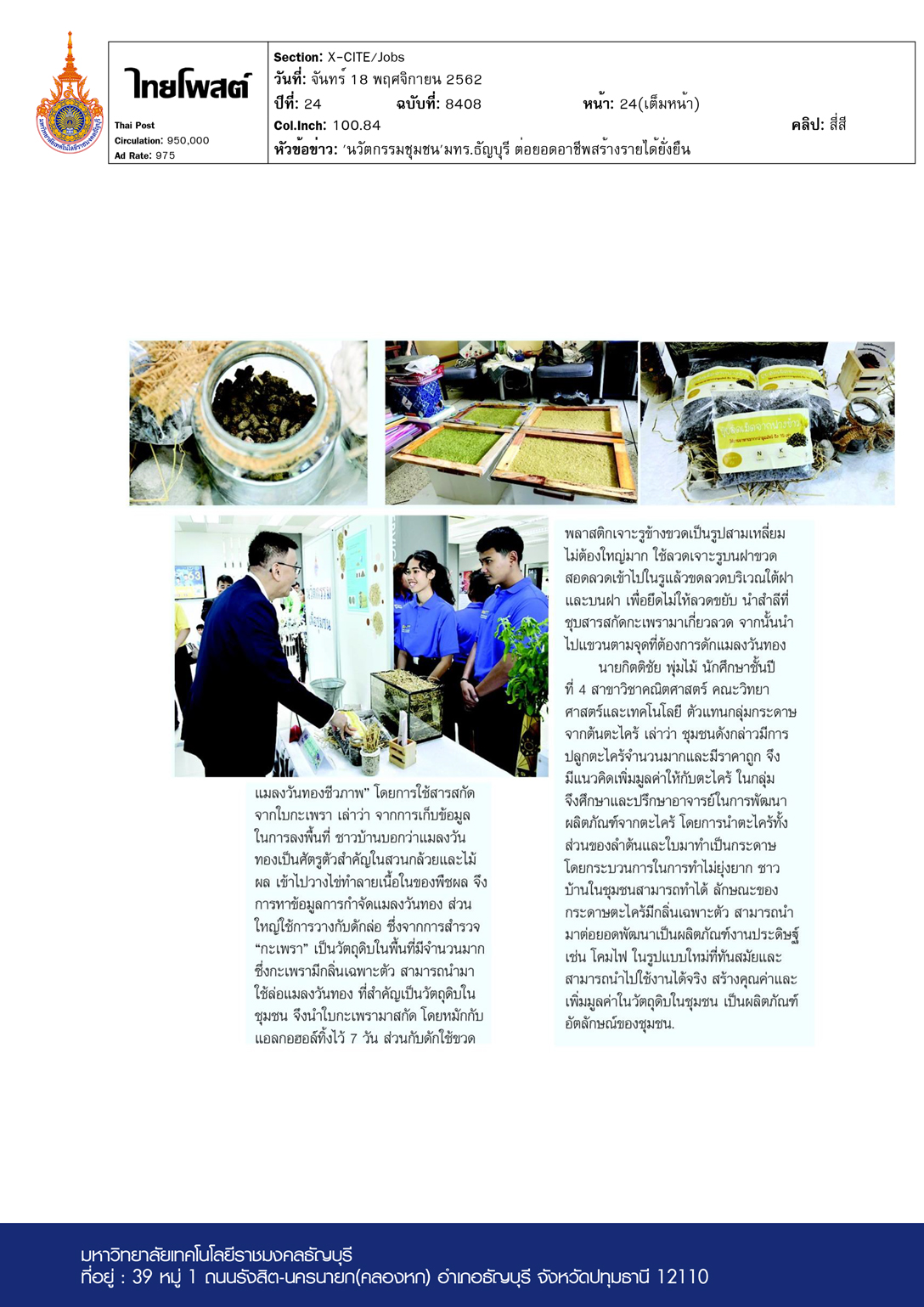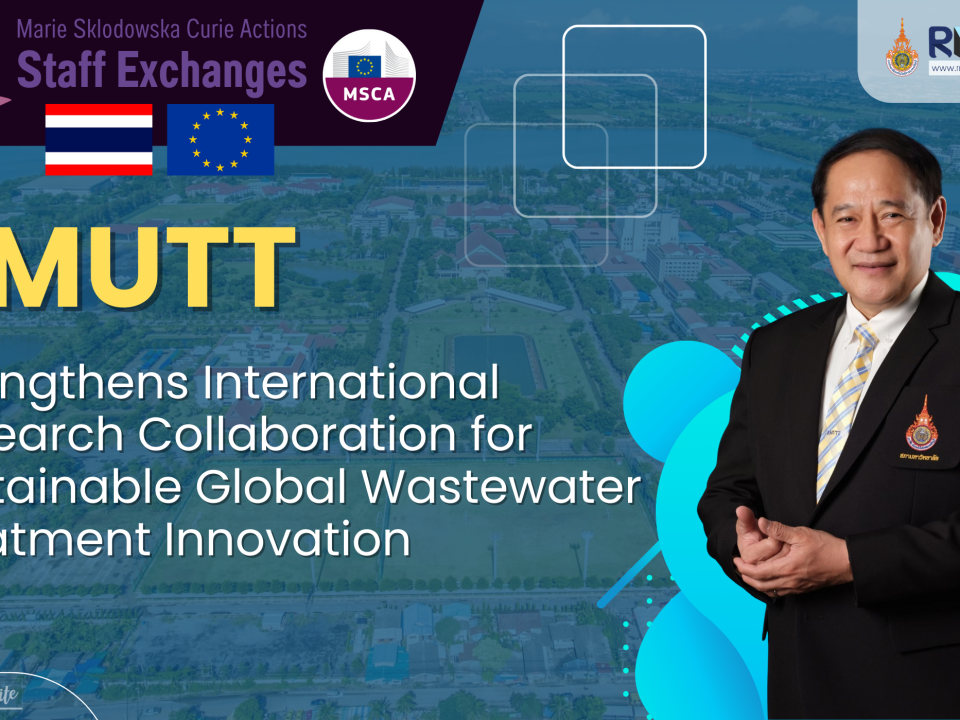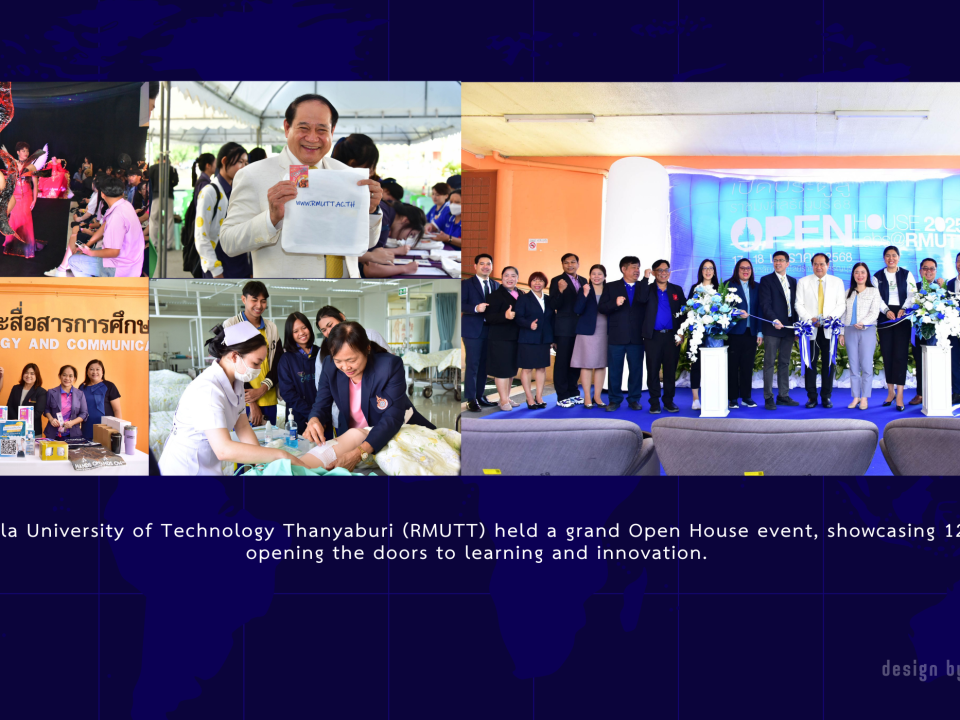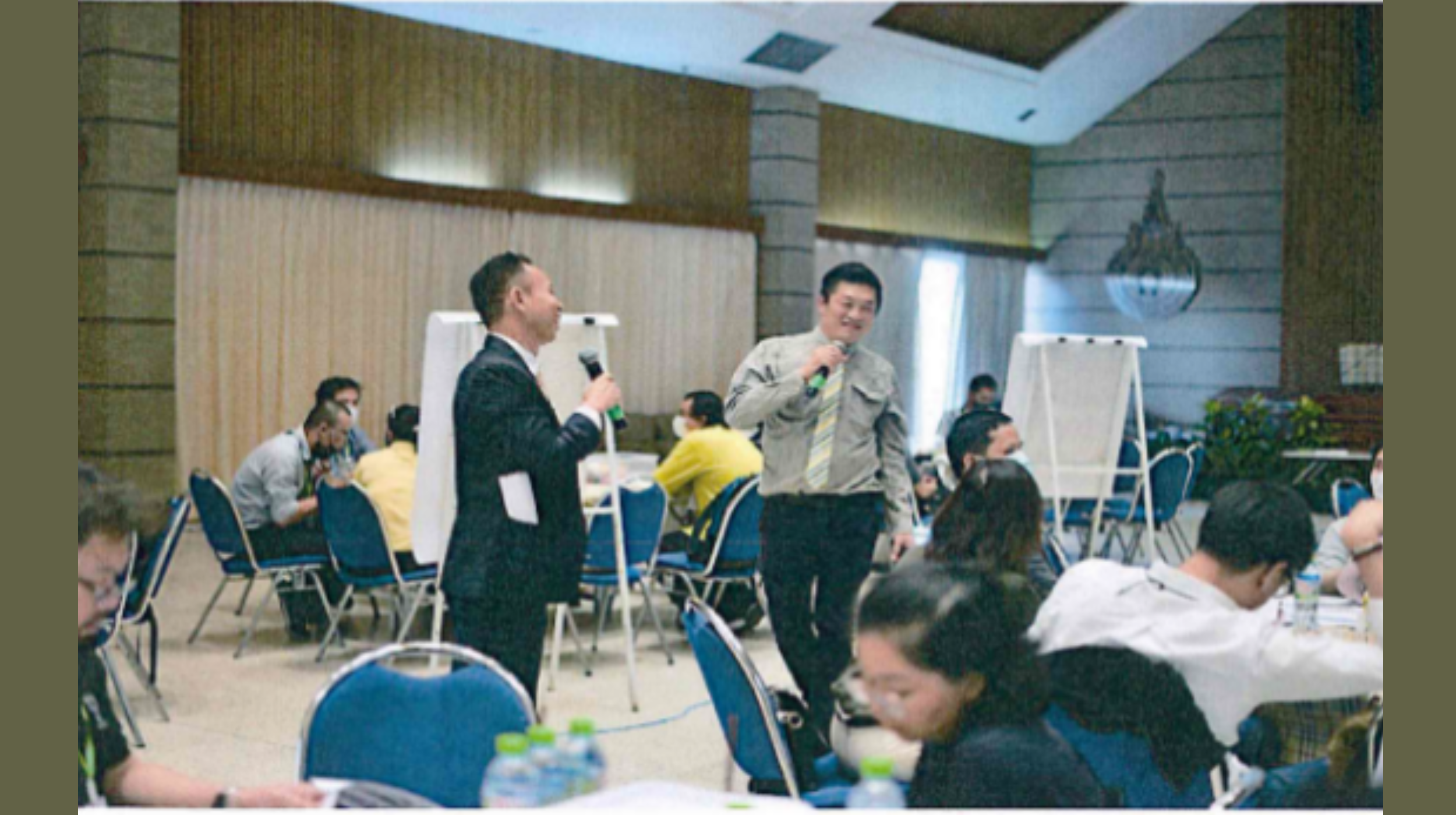
The Design Thinking in Urban Design Programmed for Thai Universities
14/11/2020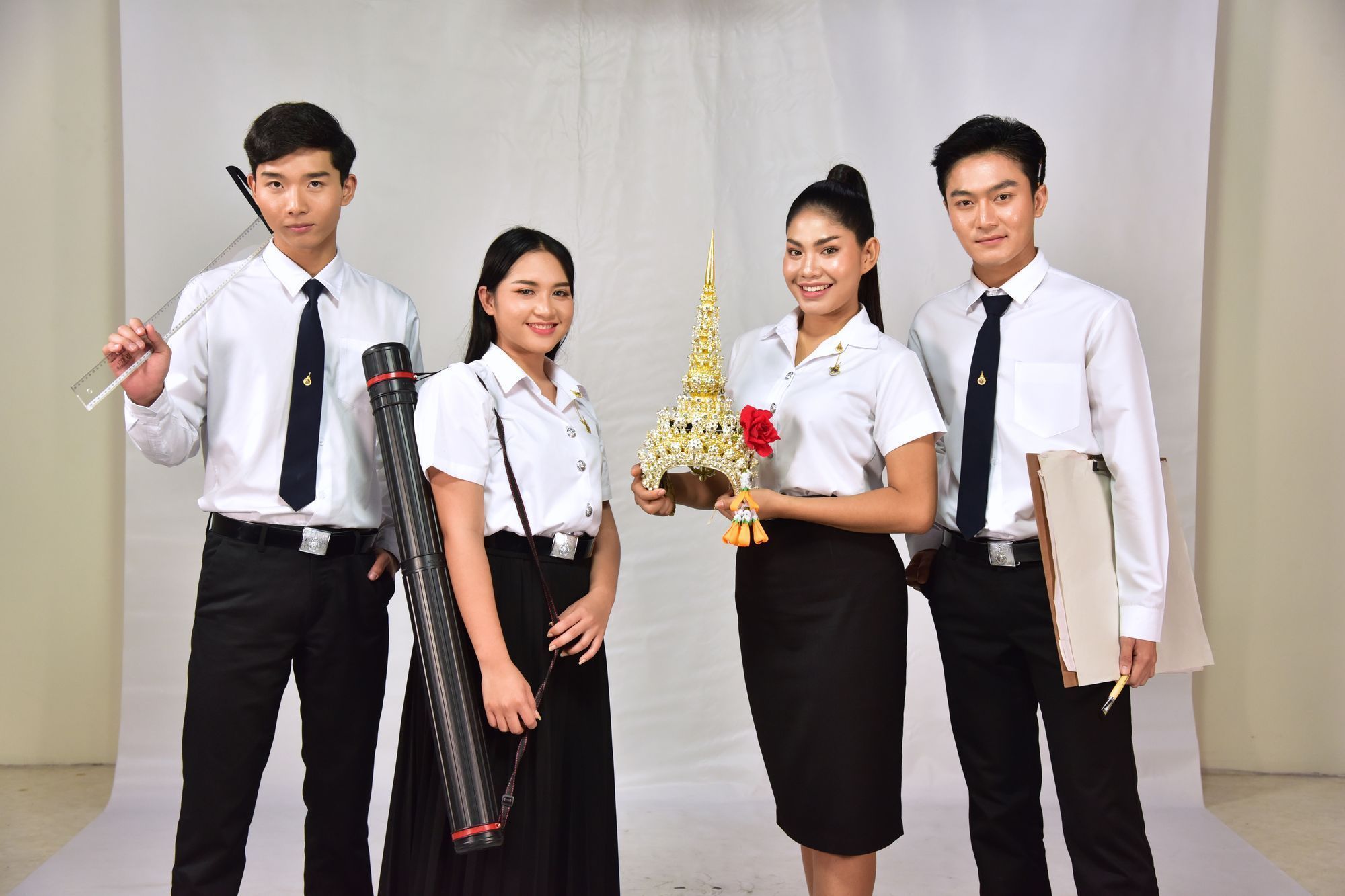
The Faculty of Architecture’s action plan preparation project to aim for a successful organization with OKRs (Objective and Key Results)
23/11/2020‘Community Innovation’ by RMUTT, “Expanding career opportunities for sustainable income”
Mr Wirat Hoyawesaya, Acting President of Rajamangala University of Technology, Thanyaburi (RMUTT), revealed that creating community classroom as a place for learning could portray the real living condition of the community. Identifying and prioritizing community’ needs and existing problems were ways to help university students create new innovations that could respond to the genuine necessities of the community and its people. Moreover, these university scholars were attempting to integrate their background knowledge with social responsibilities including team working and generosity thus, RMUTT had decided to create and launch a new university course, “Innovation for Community”. 80% of the classroom would be learning in the community while the other 20% would be inside the classroom. The course would be opened for registration in the first semester of year 2020.
Asst. Prof. Sumanika Chanbanjit, lecturer of Rajamangala University of Technology Thanyaburi, said that in order for students to understand, approach, and develop these innovations, they must be able to truly respond to the community needs. Students were obligated to be trained to use research tools including interviews, observations, and analysis of community mapping, community calendar as well as community structure and its history. Integration of team working strategy with analyzing and synthesizing information could help understand the real necessities of the community and determining its available resources and at the end of the course, ‘prototype model of innovation’ would be created. It could be suggested that to determine the success of the course was not looking at the student grade reports but rather than the satisfaction of the learners themselves and how much their works could be helping the community.
Miss Hathai Nuchawongkhom, a 4th year student in the field of plant production and representative of the group of “Pellet Fertilizer from Rice Straw” said that she took a field trip to Ban Saen Suk Chum Ha Village, Village No. 5, Bueng Ka Sam Sub-district, Nong Suea District, Pathum Thani province and found out that after completing harvesting the rice fields, the farmers would burn down rice straws and thus, this would create ever-growing problems in pollution that may be a part of causing global warming. It could be found from her studies that rice straw had better quality of soil fertility improvement than cow manure equal to the proportion of 1 to 10. The group then invented a formula of pellet fertilizer from rice straw that could be used with agricultural crops and reduce the cost of purchasing other types of fertilizer. Regarding to the process of making rice straw pellet fertilizer, rice straw and cow droppings were stacked on top of each other a layer to a layer with a thickness of 10 centimeters each. Later on, water mixture with microbes was watered on those layers to help digest the composition daily. If the composition can be watered only once a week, have the composition covered with dark plastic. After the composition was well digested, have them dried in the sun for 2-3 days before pelleting them for packaging. In pellet, it would be much convenient for using and keeping and thus, they could be manufactured commercially and created sustainable income for the community.
Miss Atiwan Sudjaidee, a 4th year student in the Department of Plant Production who was representative of a “biological fly trap” research group by using basil leaf extract revealed that during data collection in the community some of the villagers explained that they were having problems with melanogaster flies. These insects laid their eggs and destroyed their banana plants and other fruit trees. Therefore, after finding out more information on melanogaster flies, the researchers found that this type of insect would lay their eggs inside the fruits and destroy them. In order to eliminate these bugs, a biological trap was invented. “Kra Pao” or basil leaf in English which were commonly found growing in various community areas, had its own special smell that could attract flies. To create the biological fly trapper, basil leaves would be extracted and left in alcohol for 7 days and at the same time, small triangular shaped hole would be cut on the side of the bottle before piercing a hole through the cap of the bottle with wire and tightening the wire both beneath and above the cap. Next, apply surgical cotton into the basil leaf extract and tie them to the wire before hanging the bottle where needed.
Mr. Kittichai Poommai, a 4th year student from the Faculty of Science and Technology, Department of Mathematics and a representative of “Lemon grass paper” team revealed that the community had grown a lot of lemon grass which was cheap; therefore, an idea of adding product value to Lemongrass was developed. During the process of development, the group members had invited an advisor to give them suggestions and advices. However, the process of developing the products was quite simple just by using lemongrass trunk and leaves to make paper. With its unique and aromatic smell, lemon grass product could also be developed into other types of products including lamps that looked modern and was applicable. All in all, this innovation had increased local natural resource values of the community and made the product became part of the community identity.
